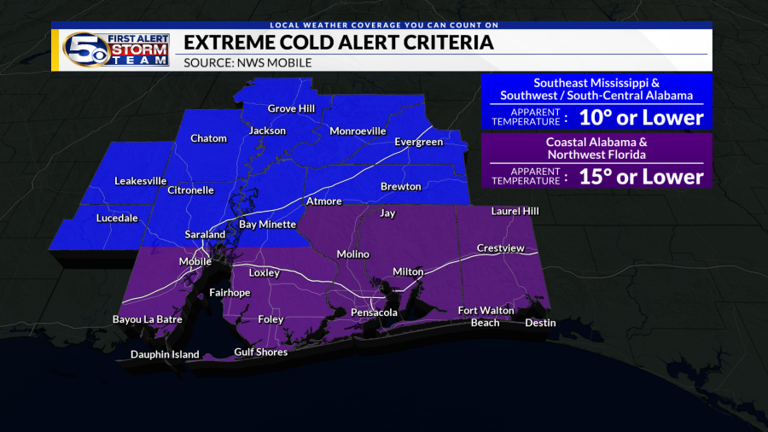Improved Heat Alerts From The National Weather Service: What You Need To Know

Table of Contents
Understanding the Enhanced Heat Alert System
The NWS has significantly improved its heat alert system to provide more accurate and timely warnings. Previously, the system relied on simpler models and broader geographical areas, sometimes resulting in alerts that were either too late or not targeted effectively. These limitations often meant vulnerable populations didn't receive warnings in time to take necessary precautions.
The improvements implemented by the NWS include:
-
Improved forecasting accuracy: Advancements in weather models, coupled with more sophisticated data analysis techniques, allow for more precise predictions of extreme heat events. This leads to earlier and more accurate heat wave forecasts.
-
More precise geographical targeting: Hyperlocal alerts are now issued, focusing on specific areas at greatest risk. This ensures that communities most vulnerable to extreme heat receive the necessary warnings. Instead of broad regional alerts, hyperlocal targeting allows for a more nuanced and effective response.
-
Clearer and more accessible communication: The NWS has adopted clearer, more concise language in its weather alerts. They also utilize multiple communication channels – from traditional media to social media and mobile apps – to reach a wider audience. This ensures that NWS alerts reach everyone, regardless of their access to specific information sources.
-
Integration with other weather data: Heat alerts are better integrated with other weather warnings, providing a more comprehensive picture of potential hazards. For example, a heat advisory might be coupled with a severe thunderstorm warning, alerting people to the combined dangers.
Examples of improved preparedness:
- Faster response times from emergency services.
- More effective community outreach programs to vulnerable populations.
- Increased public awareness and preparedness for heat safety.
Types of Heat Alerts Issued by the NWS
The NWS issues several types of heat alerts, each signifying a different level of risk:
-
Heat Advisory: A heat advisory is issued when the combination of heat and humidity is expected to make it feel dangerously hot. This means that heat-related illnesses are possible. Individuals should take precautions, such as staying hydrated and limiting strenuous outdoor activity.
-
Excessive Heat Warning: This is a more serious alert, indicating that extreme heat and humidity will likely cause heat illnesses. The conditions pose a significant threat to life and health. Individuals should take immediate action to stay safe.
-
Heat Index: The heat index is a measure of how hot it feels when relative humidity is factored in with the air temperature. A high heat index indicates a greater risk of heat-related illness. The NWS incorporates the heat index into its alerts to provide a more accurate assessment of the risk level.
Key phrases or warnings typically included:
- "Dangerously hot conditions expected."
- "Heat-related illnesses are possible/likely."
- "Take precautions to stay safe."
- "Seek air conditioning if possible."
- "Avoid strenuous outdoor activities."
How to Stay Safe During a Heat Alert
Protecting yourself during extreme heat is crucial. Follow these steps to stay safe during a heat advisory or excessive heat warning:
-
Hydration: Drink plenty of water, even before you feel thirsty. Avoid sugary and alcoholic beverages.
-
Protective clothing: Wear lightweight and light-colored clothing to reflect sunlight and stay cool.
-
Finding shade: Seek air-conditioned places during the hottest parts of the day. If air conditioning isn't available, find shade, especially between 10 a.m. and 4 p.m.
-
Checking on vulnerable populations: Regularly check on elderly relatives, neighbors, and anyone with pre-existing health conditions. Children are also especially vulnerable to heat exhaustion.
-
Recognizing heatstroke symptoms: Heatstroke symptoms include high body temperature (above 103°F), confusion, rapid pulse, and loss of consciousness. If you suspect heatstroke, call emergency services immediately.
Resources:
- National Weather Service website:
- Local emergency services
Accessing NWS Heat Alerts and Forecasts
The NWS offers multiple ways to receive critical heat alerts and forecasts:
-
NWS website: Visit and enter your zip code or location to access detailed forecasts and warnings.
-
Weather apps: Many reputable weather apps, such as The Weather Channel, AccuWeather, and more, provide real-time NWS alerts and forecasts.
-
Social media: Follow the NWS on social media platforms for updates and warnings.
-
Local news media: Local news channels and websites often provide weather updates and disseminate NWS alerts to their communities.
-
Wireless Emergency Alerts (WEA): Your mobile device will receive an alert directly from the NWS if your location is under a heat warning. Ensure your phone's alert settings are enabled.
Examples of effective usage:
- Set location preferences in your weather app for timely alerts.
- Sign up for email or SMS alerts from the NWS.
- Follow your local NWS office on social media.
Conclusion
The improved heat alerts from the National Weather Service are crucial for safeguarding communities during dangerous heat waves. By understanding the different alert levels, heeding safety precautions, and utilizing available resources to access these alerts, you can significantly reduce the risks associated with extreme heat. Stay informed and prepared by regularly checking the NWS website and your preferred weather sources for the latest heat alerts and forecasts. Stay safe and beat the heat with proactive preparation!

Featured Posts
-
 Ekstrennoe Preduprezhdenie Mada Ekstremalnye Pogodnye Usloviya V Izraile
May 30, 2025
Ekstrennoe Preduprezhdenie Mada Ekstremalnye Pogodnye Usloviya V Izraile
May 30, 2025 -
 Record Breaking Heatwave Sweeps San Diego County
May 30, 2025
Record Breaking Heatwave Sweeps San Diego County
May 30, 2025 -
 Argentine Students Learn Free Markets Thanks To Milei And The Tuttle Twins
May 30, 2025
Argentine Students Learn Free Markets Thanks To Milei And The Tuttle Twins
May 30, 2025 -
 A Well Orchestrated Scheme A Special Gift For Benicio Del Toro
May 30, 2025
A Well Orchestrated Scheme A Special Gift For Benicio Del Toro
May 30, 2025 -
 Pop Up Store Bts Fechas Ubicacion Y Toda La Informacion Para Armys
May 30, 2025
Pop Up Store Bts Fechas Ubicacion Y Toda La Informacion Para Armys
May 30, 2025
